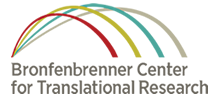 Even though it’s the dog days of summer vacation, many schools across the country are getting ready to bring students back into the classroom — and that means giving serious thought to the best ways to teach the youngest students to read.
Even though it’s the dog days of summer vacation, many schools across the country are getting ready to bring students back into the classroom — and that means giving serious thought to the best ways to teach the youngest students to read.
For centuries, reading has been the holy grail of learning; you need to be able to read to learn about almost any other subject.
The two main theories of reading instruction are phonics and whole language. Phonics instruction focuses on building reading skills from the ground up by teaching children the sounds letters make and how to piece those letters together to make words. Whole language instruction emphasizes the meaning of what children are reading instead of the sounds that make up individual words; it encourages them to combine speaking, listening, reading, and writing to figure out the words on the page.
For decades, proponents of these two methods have argued over which is the best way to teach children to read — a debate often referred to as “the reading wars.” Over the past year, new systematic reviews have shed light on what the evidence really says about teaching kids to read.
The simple conclusion is that a combination of phonics and whole language instruction is essential to teaching kids to read. How does this work?
At the most basic levels of learning to read, children need to learn that letters represent sounds. This is where phonics comes in. The most comprehensive analysis of phonics research was conducted by the National Reading Panel convened by the U.S. Congress in the 1990s. The panel conducted a systematic review of 38 studies comparing the success of systematic phonics instruction versus non-systematic or no phonics instruction. They found that children who were taught phonics systematically in kindergarten or first grade were significantly better at decoding, spelling, and comprehending text.
There is also evidence that readers at all levels — even adults — use the skills they learned through phonics to read new words they’ve never seen before. Think of the popular Harry Potter books, which introduced an entire set of wizarding words such as “muggle” and “squib;” people of all ages read those words for the first time by sounding them out.
But the research finds that reading instruction can’t stop with phonics. In order to understand texts (which is the point of reading, after all) the reader can’t sound out every word. They must learn to recognize words automatically so that they can understand their meanings quickly and move on to the next word. The evidence shows this is a gradual transition where children start by sounding out most words and then slowly move towards recognizing and understanding more words automatically.
In the transition to recognizing and understanding words, it helps if students have a broad vocabulary and if people read aloud to them, allowing them to understand more complex meanings than what they can read on their own. This is where whole language instruction comes in. And, as any teacher or parent will tell you, it’s a great benefit if the student is interested in what they are reading!
The more kids know and understand about the world, and the more words they learn, the better they will be able to understand what they are reading, and the less they will have to rely on phonics to sound out words.
The take-home message: Beginning readers need to learn phonics and pay attention to the meaning of the words they are reading. The evidence shows this combined method of teaching kids to read is most effective.



Speak Your Mind